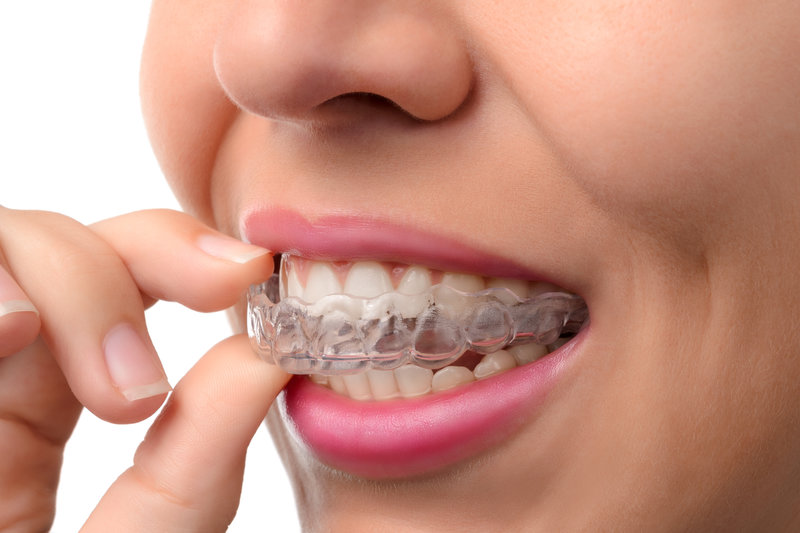What Are Clear Aligners?
Clear aligners, also known as invisible aligners or transparent aligners, are custom-made orthodontic trays designed to straighten misaligned teeth. They’ve become a popular alternative to traditional metal braces, offering a much more comfortable and discreet option.
Made from medical-grade, transparent plastic, aligners fit snugly over the teeth—similar to a glove. Unlike traditional braces, teeth aligners don’t have sharp metal edges that can irritate your mouth. They’re smooth, flexible, and easy to wear, all while gently shifting your teeth into proper alignment. One of their biggest advantages? They’re nearly invisible—most people won’t even notice you’re wearing them!
But how did we get here? Let’s take a look back at where it all began.
Looking Back: Before Clear Aligners
Before the rise of aligners, metal braces were the go-to solution for correcting uneven teeth. These included metal brackets and wires that were quite bulky and uncomfortable. They are non-removable, which made eating, brushing, and flossing difficult. Plus, they often made wearers—especially teens—feel self-conscious about their appearance.
Despite these downsides, metal braces played a crucial role in laying the foundation for modern orthodontics. They helped countless people achieve a healthy, beautiful smile. But the desire for a better, more convenient solution never faded—and that’s what led to the invention of aligners.
The Beginning of Clear Teeth Aligners
The first step toward aligner technology came in 1945 when an American orthodontist developed a rubber-based mouthguard-like device. Though primitive, it was the first removable orthodontic appliance designed to be used alongside braces.
Fast forward to the late 1990s, when clear aligners as we know them began to take shape. Thanks to advancements in computer-aided design (CAD) and 3D imaging, aligners could now be customized to each patient’s dental structure. This was a game-changer for orthodontics.
However, early aligners were expensive and not easily accessible. It wasn’t until the mid-2000s that they became more widely available, marking the start of a new era—where aesthetics and function could finally coexist in orthodontic care.
How Do Teeth Aligners Work?
Teeth aligners come in a series of custom-made trays, each designed to shift your teeth slightly more than the last. Typically, each set is worn for 1–2 weeks before moving on to the next. For best results, aligners should be worn 20–22 hours a day, but they can be removed while eating or brushing your teeth.
Depending on the complexity of the case, treatment can take anywhere from 6 to 18 months. Throughout this time, your teeth gradually shift into their ideal positions—all without the hassle of metal wires.
The Smarter Aligners of Today
Today’s aligners are far more advanced than those from decades ago. Thanks to modern technology like 3D scanning and AI-driven treatment planning, aligners are now safer, more precise, and more effective.
Brands such as Illusion Aligners are leading the way by offering aligners made from certified, biocompatible materials. Dentists can now map your teeth digitally and even show you a preview of your future smile before the treatment begins.
And it’s not just adults—today’s aligners are suitable for teens too, thanks to flexible materials and faster treatment times.
Who Can Use Aligners?
Aligners are suitable for treating:
Crooked or misaligned teeth
Gaps between teeth
Overbite or underbite
Crowded teeth
Your dentist or orthodontist will evaluate your mouth to see if aligners are right for you.
Why People Prefer Aligners
Nearly invisible when worn
No metal wires or brackets
Easy to maintain oral hygiene
Eat what you like—just remove them
Less discomfort compared to braces
The Future of Aligners
The future of aligners looks incredibly promising. With innovations like artificial intelligence, smart sensors, and adaptive materials on the horizon, aligners are becoming even more intelligent and user-friendly.
Imagine aligners that adjust automatically or track your treatment progress through an app. Soon, your dentist could monitor your smile remotely and fine-tune your treatment in real-time.
What once seemed like science fiction is quickly becoming reality.
Final Thoughts
From bulky metal braces to sleek, nearly invisible aligners, the evolution of teeth straightening has been remarkable. Aligners have revolutionized orthodontics—and the journey is far from over. With rapid technological advancements, the future of straightening your teeth is not only clear, but brighter than ever.
